In this review...
- What we know so far
- Expected Price
- Exterior
- Interior
- Technology
- Engine & Performance
- Final Thoughts
1. Hyundai Venue: What we know so far
Hyundai Philippines posted several cheeky teasers on its official Facebook page. The first one is a picture of a man wearing a pair of goggles reflecting the daytime running lights of a car.
The second teaser shows a picture of a neon hand making the “V” sign while a party goes on in the foreground.
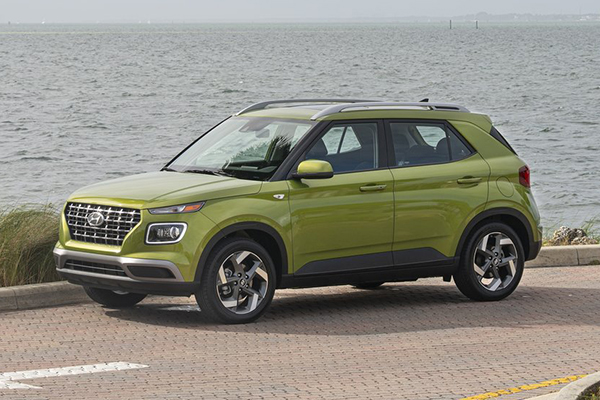
Check out Hyundai PH's post and take a look at the Venue's DRLs.
If you’re the keen type, then you’ll have noticed that these are teasing the Hyundai Venue. For now, though, Hyundai PH is yet to confirm the exact date for this crossover’s local debut.
But before it gets introduced here, let’s take a closer at the 2022 Hyundai Venue and learn why this might be a big game-changer for Hyundai if introduced locally.
2. Hyundai Venue: Expected Price
We’re certain that Hyundai Philippines is introducing the Venue with about the same price range as the recently launched Kia Stonic. With that, the Hyundai Venue’s local price could range from around Php 730,000 up to a little over or under 1-million pesos.

With a sub-1 million peso price range, the Hyundai Venue has the potential to become a hit
3. Hyundai Venue: Exterior
The Hyundai Venue is 3,995 mm in length, 1,770 mm in width, and 1,590 mm in height. Its wheelbase is 2,500 mm long. With that kind of size, the Venue is set to compete against the likes of the Ford EcoSport, Geely Coolray, MG ZS, and many other subcompact crossover models.
For the Indian-spec version, the Hyundai Venue 2022 is equipped with LED headlamps and daytime running lamps for the top variants and halogen lamps for the entry-level variants. In the Indian, South Korean, and North American markets, the Venue comes standard with LED tail lamps, rear skid plates, and body-colored bumpers.
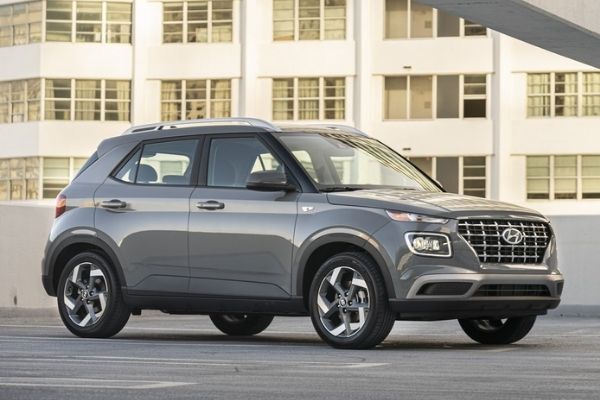
It's the Korean marque's smallest crossover model
>>> Related: Hyundai Venue for sale at affordable prices on Philkotse
4. Hyundai Venue: Interior
Inside, the Hyundai Venue can comfortably fit up to five occupants. Entry-level Indian-spec variants are equipped with manual air-conditioning, while high-end variants have an automatic air-con system with a rear vent.
For the driver, the Venue provides a D-shaped steering wheel, a height-adjustable driver’s seat and headrest, steering wheel mounted audio controls, cruise control, and a push to start button. The dual-clutch variants also get paddle shifters, and the top-spec variants come with an electric sunroof.

The Hyundai Venue's steering-wheel and dashboard
The standard for all Venue variants is a wealth of storage spaces. These include seatback pockets as well as front and rear door map pockets.
With the rear seats up, the Hyundai made subcompact crossover’s trunk can fit up to 529-liters. With the rear seats folded down, that space can expand up to 903-liters. That’s significantly better than the Ford Ecosport’s 352-liter boot, the MG ZS’s 488-liters, and the Geely Coolray’s 330-liters.
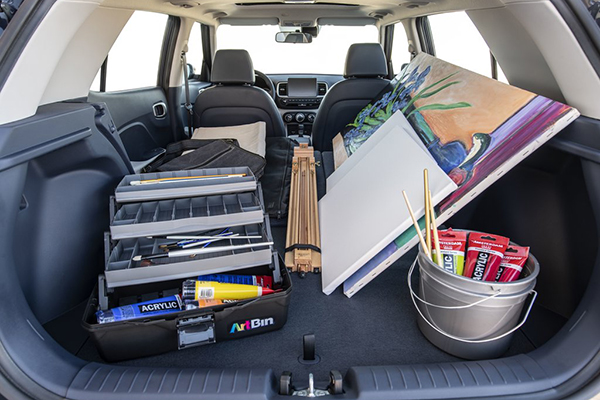
That's a lot of space for a very compact car
>>> Find your nearest Hyundai dealerships and wait till the car's out!
5. Hyundai Venue 2022: Technology
For on-board technology, the Venue uses an eight-inch touchscreen infotainment system. It comes standard with Apple CarPlay and Android Auto, as well as voice recognition. Apart from that, the said unit can also connect via Bluetooth.
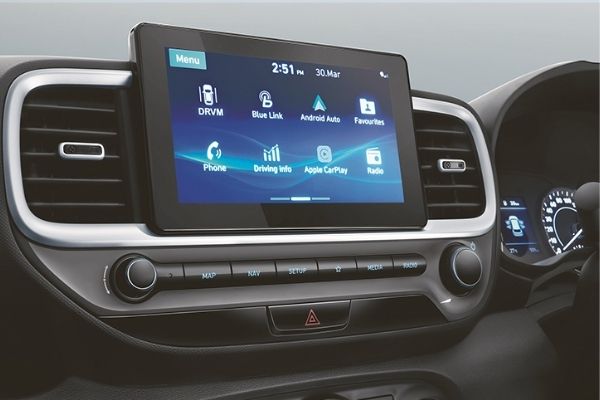
Hyundai Venue's touchscreen
The said entertainment system is linked up to a four-piece speaker set. Also provided for the Venue are front and rear power outlets and a USB charging point.
>>> Related: 2020 Hyundai Venue would be a great addition to marque’s PH lineup
6. Hyundai Venue: Engine and Performance
In other markets, the Hyundai Venue has several options. Among those are the following: the 1.0-liter turbocharged inline-3 Kappa II gasoline, the 1.6-liter inline-4 Gamma II diesel, the 1.4-liter inline-4 Gamma II gasoline mill, and the 1.5-liter CRD-I diesel.
If we had to guess as to which engine the Philippines will get, we’re leaning towards the 1.4-liter inline-4 gasoline engine. It can make up to 98 horsepower and 132 Nm of torque. We’re hoping however that Hyundai PH also introduces the 1.6-liter diesel engine. It makes around the same amount of horsepower, but it makes a bit more torque at 151 Nm.
If you’ve noticed, the 1.4-liter engine makes the same output as the current Hyundai Accent we have in the country. In fact, the new Hyundai Venue actually shares the same Hyundai-Kia K2 platform used by the latter. It even has the same MacPherson strut for the front and a torsion beam suspension for the rear.
Available transmissions for the Venue are a six-speed manual, a six-speed clutchless manual, a seven-speed dual-clutch, and a continuously variable transmission. For now, we’re not certain which transmission the Philippine-spec Venue will get, but we’re not expecting the clutchless manual.
>>> Related: Sib Duel: Hyundai Accent vs Hyundai Reina Specs Comparison
7. Hyundai Venue: Final Thoughts
If you’re a keen observer of automotive trends, then you’ll have noticed that the local competition for subcompact crossovers has been getting stiff in recent years.
There’s the influx of affordable Chinese made models like the Geely Coolray, GAC GS3, the Chery Tiggo series of crossovers, and MG’s crossovers. Most of these are currently priced below Php 1 million and suffice to say, these are selling well right now.
In contrast to that, only a few (non-Chinese) car manufacturers with a local presence have a sub-1 million crossover. Currently, there are two exceptions. There’s Ford with the EcoSport Ambiente and Trend. Both of these EcoSport variants however are priced above Php 900,000 and come with a manual transmission.

The Venue might provide Hyundai the edge to compete against those Chinese-made crossovers
>>> Related: [Philkotse guide] All about Korean car brands in the Philippines
There’s also the recently launched Kia Stonic which comes with a very attractive Php 735,000 to Php 925,000 price range.
If Hyundai PH introduces the Venue locally with a very affordable price-tag just like the Kia Stonic, then the company can compete toe-to-toe with most of these Chinese-made crossovers.
The Korean car brand can even hit two birds with one stone as it can undercut the crossovers being offered by the other major brands, which historically are Hyundai’s direct competitors in the first place.
Do you think Hyundai PH will do well to add the Venue to its model lineup? Would you like to see the Venue on Philippine roads? For updates on the Hyundai Venue 2022 review and more car reviews, automotive news, as well as car maintenance tips, keep reading here on Philkotse.com.
Recommended articles
- 2021 Isuzu D-Max LS-E Review Nov 22, 2022
- Honda CR-V expectations Mar 07, 2022
- Kia Sorento Expectations Mar 05, 2021
- 2021 Mazda BT-50 expectations Feb 19, 2021
- Toyota Fortuner Expectations review Nov 22, 2022



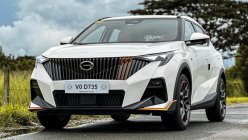



![Which 2021 Hyundai Venue variant should you buy? [Comparison Guide]](https://img.philkotse.com/crop/94x52/2021/06/04/WFFKkBCT/hyundai-venue-variant-guide-9c16.png)







